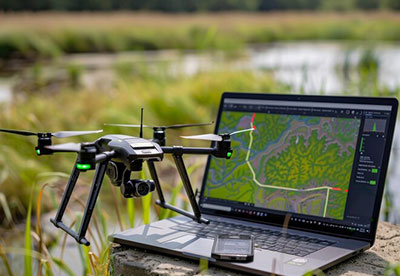Imagine shopping for a mobile on Amazon. How many of us really use the same device to Search, Buy, and Pay?
Really a few. The same is the case with your customers as well. According to research, it’s found that an average human in his daily routine uses 3 different devices to complete a task.
This makes it hard to make simplified decisions as you’re never fully aware of what your customer journey is exactly. This cannot only skew your analytics report but lead to faulty decision-making.
Well, you’re not alone, you’re a victim of modern tech connectivity, where all our devices are in perfect sync. But relax, there’s a way to make sure your decisions are not distorted.
Cross-device tracking or attribution
Cross-device tracking or attribution refers to the challenge of accurately identifying and attributing user actions across multiple devices (such as smartphones, tablets, and laptops) and channels (such as mobile apps, and websites).
Cross-Device tracking/attribution is the best way to ensure you are aware of your user’s journey in its entirety. A problem usually arises because users often switch between devices during their customer journey, making it difficult to track and attribute their actions accurately.
But there’re ways to make sure your decision-making is perfect, and you can map out your entire user journey. Software solutions can help you overcome this challenge by utilizing various techniques and technologies.
Let’s check them out what they’re in detail
Cross-Device Tracking Methods
Device Graphs
Modern Advertising Technologies have made it possible to send personalized messages to target devices. But it’s the people who pay us, not the devices. Hence ensuring good outreach among your target audience is crucial.
This can be done quickly using Device Graphs. Device Graphs are databases that connect different user devices based on various identifiers such as cookies, device IDs, login credentials, etc.
These device graphs allow for cross-device matching, enabling the tracking and attribution of user actions across devices. This gives you more opportunities to create broader opportunities in terms of a personalized experience.
Well, if you think creating one can be time-consuming and complex, you can always choose third-party analytics with device graphs functionality included.
Probabilistic Modelling
Probabilistic Modeling is a statistical method for predicting future outcomes based on the results of random events or actions.
To make sure your predictions are not distorted, Adding Probabilistic modeling algorithms that analyze patterns of user behavior, device usage, and contextual information to make educated guesses about cross-device connections can help.
These models assign probabilities to different devices being used by the same user, helping in accurate attribution.
Deterministic Matching
Deterministic matching algorithms are aimed at recognizing the same users on multiple devices by matching various parameters and values together.
Deterministic Matching can be implemented by utilizing authenticated users’ data or login credentials. When users log in or authenticate across multiple devices, the software can directly attribute their actions to the same user, enabling accurate cross-device tracking and attribution.
Fingerprinting Technologies
The process of fingerprint recognition involves comparing a person’s fingerprint with previously recorded samples in order to verify their identity.
Fingerprinting technologies can be enabled to collect and analyze device-specific attributes, such as browser configurations, IP addresses, and user agent strings.
These attributes create unique device fingerprints that can be used to identify and connect user actions across various devices.
Data Integration and Analysis
Software solutions can integrate data from various sources, including ad platforms, websites, and mobile apps, to create a unified view of user interactions.
They must Apply advanced data analysis techniques, such as machine learning algorithms to identify cross-device patterns and accurately attribute user actions.
Having unified Analytics can simplify decision-making and also make sure to offer a simplified analytical experience.
Cross-Device Attribution Models
Cross-Device Attribution Models are analytical algorithms used to understand users’ behavior across devices to make informed decisions.
Software providers can incorporate advanced attribution models that consider cross-device behavior. These models attribute conversions and actions to the most relevant touchpoints and devices along the customer journey, accounting for interactions across multiple devices.
Final Words
By leveraging software solutions that employ the above-mentioned techniques, the AdTech industry can better understand user behavior, optimize advertising strategies, and attribute conversions accurately across devices, leading to more effective marketing campaigns and improved user experiences.
It’s important to note that your device tracking/attribution solutions must be in compliance with privacy regulations and respect user consent.
We at Canopus Infosystems, make sure you have a complete overview of how your users work around your application and visuals that can guide you to make informed decisions.
3 mins read


















